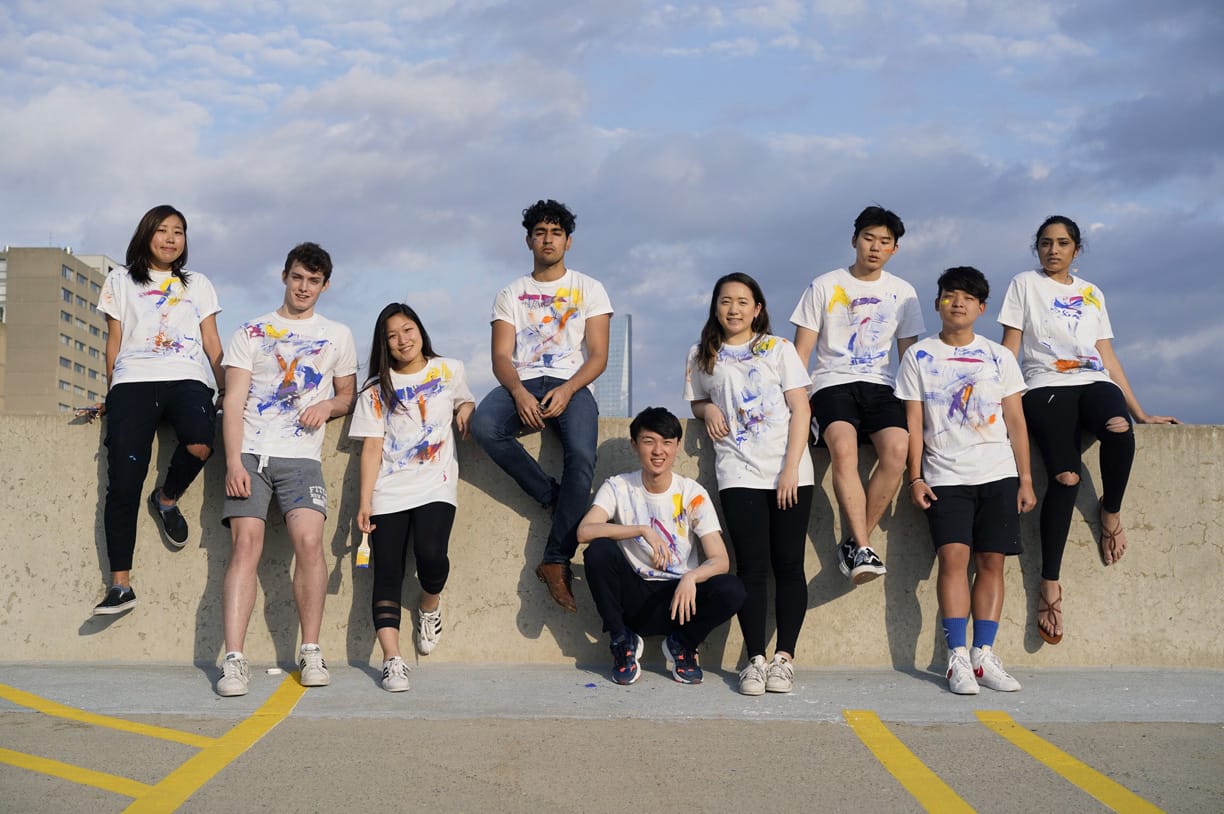Like the majority of students, I touched down on Penn soil from my home (in Dubai) with a life plan in hand: pursuit of a deep business education intertwined with physics. The stars in my eyes shone for a PhD and a material science academic career. However, as my freshman year unfolded, I didn’t have time to express myself creatively. Through an impactful project supported by the Sachs Program for Arts Innovation—developing visual representations of music through electroluminescent materials—I was able to put my hands to use at the interface of arts and science. The experience convinced me to carve a unique path along my Wharton journey.
My first semester back after freshman year, I was determined to take my craving for creativity and freedom into science, so I took a course on biological design taught by Weitzman School of Design fine arts professor Orkan Telhan and biology professor Karen Hogan. I fell in love with the nascent field because it was what hippies dreamed about: using nature to heal nature. Biodesign revolves in part around the manipulation and engineering of “natural” life to create anything from art to green synthetic products. It’s also an extension of a changing philosophy and attitude toward the world: We’ve polluted in the name of progress, and we need better tools.
Synthetic biology is usually written about in purple prose, but many designers have made strides in democratizing genetic engineering. Penn has pivotal leaders in the field, including Wharton alumni such as Andras Forgacs WG05. Forgacs founded Modern Meadow, a highly valued synthetic biology business that’s creating animal-free leather from genetically engineered yeast. The process of tanning leather makes it particularly difficult to work with for couture designs; in contrast, the malleability of the newly engineered textile allows it to be shaped into new forms. One of the company’s projects spoke to me: a t-shirt with synthetic leather strips that look like long paintbrush strokes.
I was lucky enough to get an up-close look at Modern Meadow in the fall of my sophomore year as part of Wharton’s Industry Exploration tech trip to New York, run by management professor Ethan Mollick and student life director Lee Kramer. During the four-day excursion, we visited many successful startups launched by Penn alumni and heard the founders speak of their humble beginnings. Forgacs stood out for me as he shared his entrepreneurial journey and offered inspiring life advice, particularly regarding how his prior work in consulting affected his career trajectory.
Forgacs’s success left me inspired. The biodesign class was a wide-ranging experience, and the culture of the field was warm and encouraging, so I continued to work on projects after the class finished. Along with four other students, I presented at the MoMA this year as part of Penn’s team for the Biodesign Challenge. Our “Denimaize” group developed a sustainable denim-like fabric made from chemically treated corn-husk fibers in a flaxseed blend, which was then microbially dyed and relaxed with enzymes. Fashion houses will increasingly need alternative textiles and pigments, since many common materials aren’t biodegradable and their processing can be lethal for labor and ecosystems. Our goal was to help reweave the future of denim.

Khawaja speaks with his Denimaize team at the MoMA’s Biodesign Challenge in June.
For all my work with science and design, I find the pursuit of business education is still essential, and it provides a platform for my creative expression. This past summer, I worked for a brand strategy firm in New York and saw how applied art impacts commerce: Companies with haphazard identities came to us to build a visual and verbal narrative around them. For example, a recently acquired consumer food appliance brand was in desperate need of a framework for its visual systems. We not only rebuilt the brand’s visual identity; we also created a compelling and wholesome brand voice. I had a tiny hand in the rebrands of Fortune 500 companies, major mergers and acquisitions, and high-growth startups.
As I begin my junior year, it seems that all my interests—business, science, and art—are coming together in a rich patchwork. My path may be offbeat, but my rigorous Wharton education has led me away from my original plan to pursue a career in academia. It had a profound effect on me; analytical in high school, I’m now artsy. That shift has been cathartic and fulfilling. Thanks to my professors’ mentorship and talks from alumni like Forgacs, I’m more comfortable than ever living life outside the box. And I’m moving forward with the confidence to stitch together my passions.
Saif Khawaja W21 is from Dubai, UAE, concentrating in an individualized program in Innovation & Design at Wharton. He loves to DJ, take care of his plants, and practice mindfulness.
Published as “The Art and Science of Business” in the Fall/Winter 2019 issue of Wharton Magazine.

























